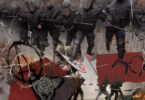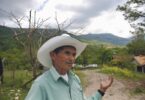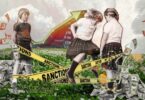On November 1, 2024, at the main railway station in Novi Sad, Serbia (the second largest city in the country), the concrete canopy of the building collapsed suddenly, killing 16 people and injuring another person. Students from various Serbian universities started to organize protests, demanding for accountability from authorities regarding the incident.
Their anger was further fueled by the fact that the railway building was recently renovated as part of a Serbian-Chinese project. On November 22, last year, a protest by students from the Faculty of Dramatic Arts at the University of Belgrade gathered to honour the Novi Sad victims, was attacked by a group that included high-ranking members of the ruling Serbian Progressive Party. Several days after this, as a response, the students started a blockade of the faculty, an action that was replicated by other faculties and universities across Serbia. Later the protests were joined by other groups: teachers, workers, activist groups from other parts of Serbia.
On March 15 this year, half million Serbs came to Begrade and staged the biggest protest in the history of the country.
With my guests, Iskra Krstić, journalist and researcher and Juhász András , journalist, both of them from the Serbian left-wing news website Masina I will try to discuss questions such as:
What is the constituency of the protests (social forces, classes etc)?
What is the structure of the protest: leaders, organization, messages?
To what extent these protests are a case of ”politics as usual” (such as protests against corruption, against ”bad capitalism” that end up being coopted by the establishment) or a case of really transformational political practices that are changing, at a deep and structural level, the way politics is being done in Serbia?
The podcasts can be found also on Spotify.
If you can afford, please consider the option of supporting us on Patreon.
Featured image: Protest “15 for 15” in Belgrade; Photo: Mašina









